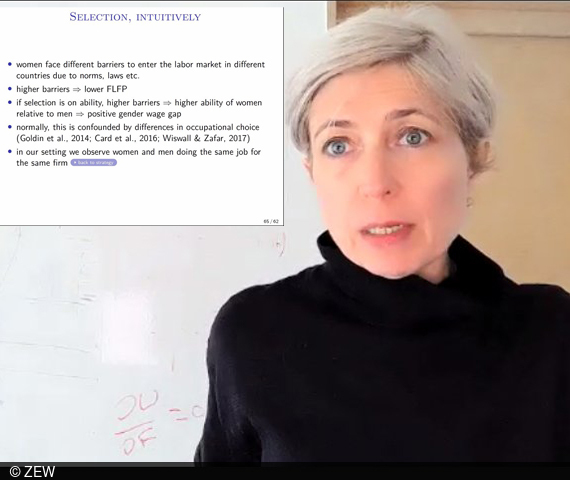International ZEW Conference on Behavioural Public Economics
ConferencesOnline Edition for the Second Time Due to the Pandemic
Why are female talents not always allocated in the best possible way on the international labour market? How should consumer goods be optimally taxed in the face of externalities? How does tax avoidance occur? These and other questions were addressed at the annual ZEW Public Finance Conference, jointly organised by ZEW Mannheim and the Collaborative Research Center SFB 884 “Political Economy of Reforms” of the University of Mannheim on 6 and 7 May 2021. For the second time, around 200 researchers from all over the world came together digitally, resulting in a very international programme. This year’s main topic was “Behavioural Public Economics”.
Keynote speakers at the conference were Oriana Bandiera, professor of economics at the London School of Economics (LSE), and Dmitry Taubinsky, assistant professor of economics at the University of California, Berkeley. Bandiera opened the conference with a presentation on the misallocation of women’s talent across countries.
Labour market participation and remuneration of women worldwide
In her keynote speech, Professor Oriana Bandiera presented a new, as yet unpublished study on the participation and remuneration of women in the labour market. For this purpose, she and her co-authors examined the employment figures of a large, multinational company. The results show that in developing and emerging countries, it is primarily the particularly talented and well-educated women who are employed, thus creating a selection bias. The consequence is that in the labour markets considered, working women are on average better qualified than men. The preliminary results are also relevant for the discussion on the gender pay gap. They suggest that conventional analyses tend to underestimate the wage gap because they do not sufficiently take into account the selection of women in taking up employment.
Achieving optimal taxation of consumer goods in consideration of misinformation and externalities
The closing keynote by Dmitry Taubinsky addressed the still rather young research line of behavioural public economics. In his work, Taubinsky questions common assumptions of economic analyses. He examines how policy measures can best be designed given that consumers do not always make purchasing decisions that are in their best interest. Typical examples are the consumption of tobacco, alcohol, sugary drinks or non-renewable energy sources, all of which create immediate or later costs for others. Such health or environmental costs are usually not fully taken into account in consumption decisions. In their research project, Taubinsky and his co-authors investigated the optimal taxation of lotteries, the consumption of which can nevertheless be welfare-enhancing despite behavioural distortions, such as exaggerated optimism or difficulties in self-control . The authors observe that the consumption of such goods is more pronounced in low-income groups. They argue that this consumption pattern must be taken into account in taxation, as otherwise it could lead to an unequally distributed tax burden.
Current research on public finance
In seven blocks consisting of three parallel sessions each, international researchers presented and discussed current research findings on this year’s thematic focus on both conference days. The research projects covered a broad spectrum, ranging from empirical and theoretical contributions on political economy to research questions on tax policy and topics such as tax avoidance by private persons and companies. In addition to presentations on policymakers’ considerations of fiscal and debt policy, other contributions addressed private-sector reactions to the effects of the COVID-19 crisis, voter behaviour, the impact of social policy and the taxation of externalities in the energy sector.

